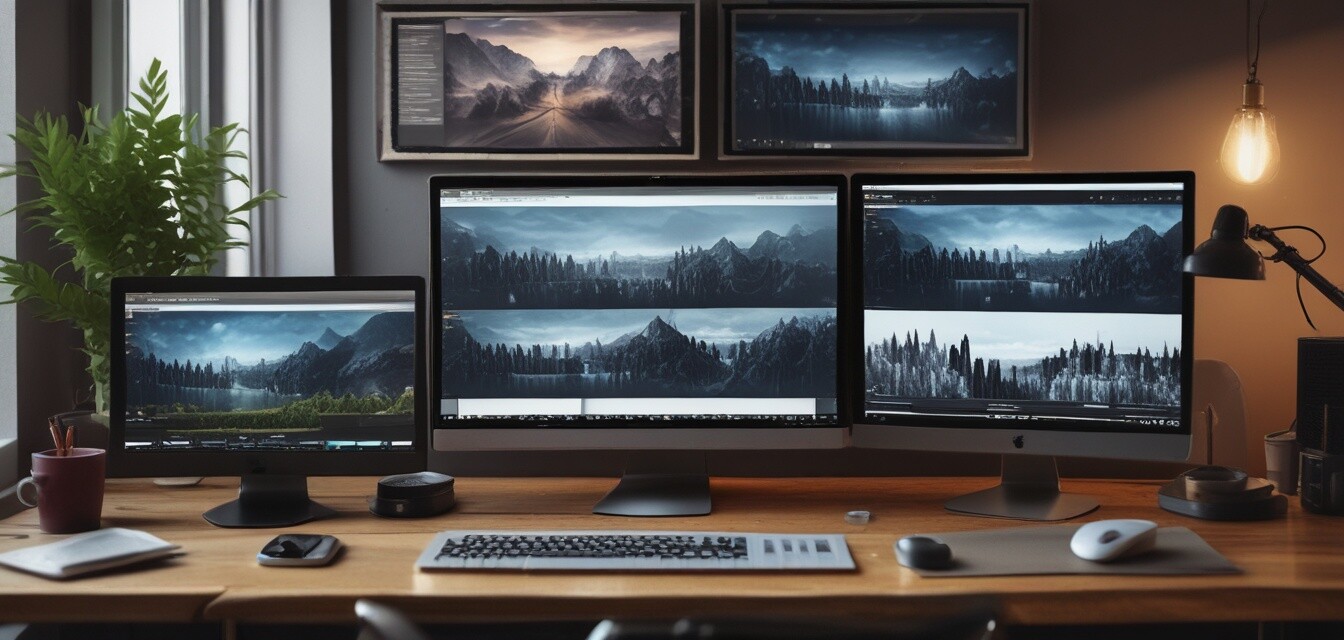
Tips for using multiple monitors with your laptop
Key Takeaways
- Using multiple monitors can greatly enhance productivity.
- Proper setup and configuration are essential for an optimal experience.
- Explore display settings to maximize screen real estate.
- Ergonomic positioning is key to reducing fatigue.
- Consider software tools for efficient window management.
In today’s fast-paced work environment, maximizing productivity is essential. One of the best ways to achieve this is by utilizing multiple monitors with your laptop. This guide provides tips on setting up and optimizing a dual or multi-monitor configuration to enhance your overall user experience and efficiency.
Benefits of using multiple monitors
Switching to a multi-monitor setup offers various benefits. Here’s what you can expect:
- Increased screen real estate for better multitasking.
- Improved focus with less time spent switching between windows.
- Enhanced collaboration by sharing screens during virtual meetings.
- Better organization of your workflow with dedicated screens for different tasks.
Setting up multiple monitors
Here’s a step-by-step guide on how to set up and configure multiple monitors with your laptop:
Step 1: Check your laptop’s compatibility
Before you start, ensure that your laptop supports multiple displays. Most modern laptops allow this, but it's good to check:
- Look at the available ports (HDMI, DisplayPort, USB-C).
- Consult your laptop's user manual or manufacturer’s website for specifications.
Step 2: Connect your monitors
Connecting your monitors is usually straightforward:
- Use the appropriate cables to connect the monitors to your laptop.
- Turn on the monitors and your laptop.
Step 3: Configure display settings
Once connected, you need to configure the display settings:
- Right-click on your desktop and select Display settings.
- In the settings window, you will see your connected monitors.
- Click on each monitor to adjust the resolution and orientation.
- Choose the display mode that suits you best (extended, duplicate, or second screen only).
| Display Mode | Description |
|---|---|
| Extended | Supports a non-mirrored workspace across multiple screens. |
| Duplicate | Shows the same content on all connected screens. |
| Second screen only | Disables the laptop display and uses the external monitor(s) only. |
Optimizing your multi-monitor setup
Once you have everything set up, it’s time to make sure you’re using your screens to their full potential:
1. Ergonomics
Arrange your monitors for comfort and productivity:
- Align the top of the monitors at or below eye level.
- Keep the screens at an arm’s length to reduce eye strain.
2. Software tools
Utilizing software can enhance your experience:
- Consider window management tools for organizing open applications.
- Look into virtual desktops for better project organization.
For more tips on software that can assist with your productivity, visit our Expert Tips section.
3. Customizing settings
Customize your settings for ease of use:
- Adjust brightness and contrast for each screen based on your environment.
- Use different wallpapers for each monitor to help differentiate tasks.
4. Cable management
Keep your workspace tidy:
- Use cable ties or sleeves to manage cables effectively.
- Position your monitors to minimize cable clutter.
Common troubleshooting tips
If you encounter issues while setting up or using multiple monitors, consider these troubleshooting tips:
- Check cable connections and ensure they are firmly connected.
- Try restarting your laptop and the monitors.
- Access display settings to ensure everything is configured correctly.
- Update your graphics drivers for optimal performance.
Pros
- Boosts productivity.
- Improved organization and task management.
- Narrow workflow gaps.
Cons
- Requires more desk space.
- Can lead to distractions if not managed properly.
- May be costly, depending on your monitor choices.
Conclusion
Setting up multiple monitors with your laptop is a great way to enhance productivity and streamline your workflow. With the right setup and optimization, you can transform your workspace into a powerful tool for efficiency. For more insightful tips to improve your computing experience, check out other articles in our Buying Guides section.